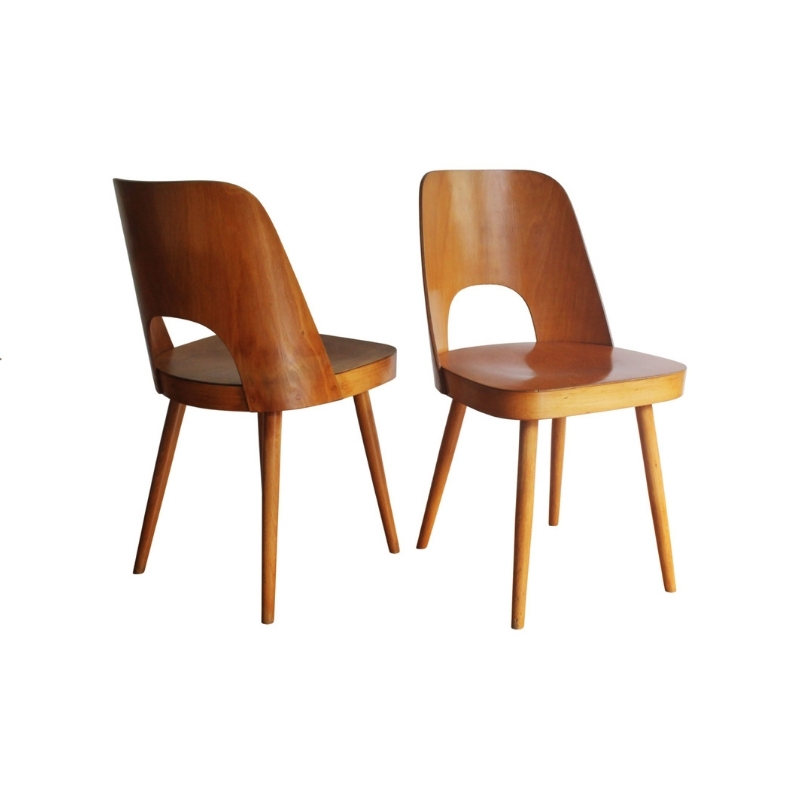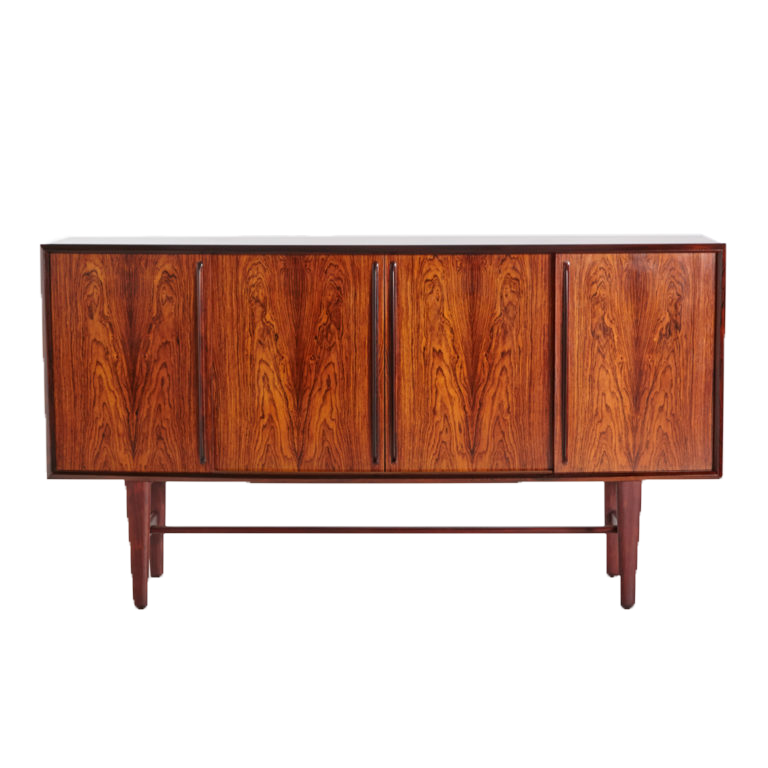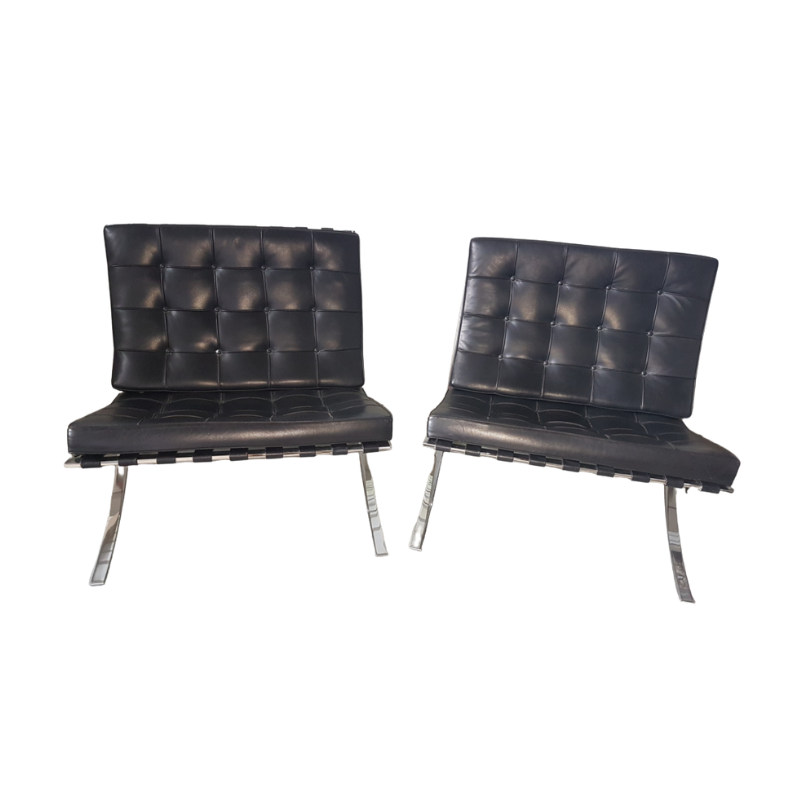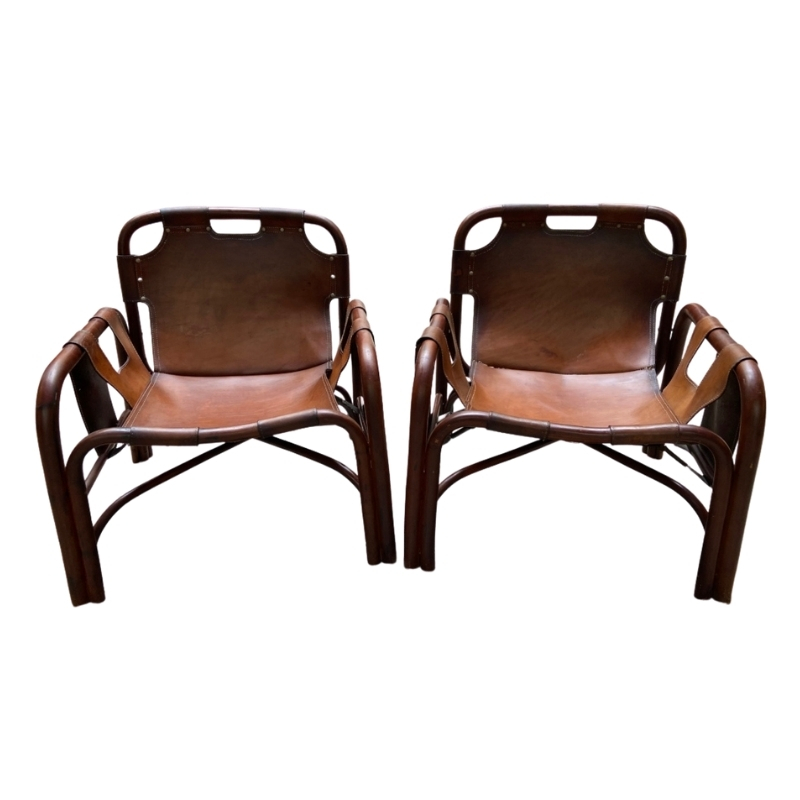This is getting even more int...
This is getting even more intriguing because in the second to the last picture (the bottom right shock mount), it looks like the screw doesn't go into the center of the shock mount where it's supposed to go. If that's the case, does it mean a second hole was drilled into the mount? Mark maybe right about a previous repair? But then the mount in the last picture looks brittle and old enough to be original. So a repair that kept the original mount? I don't even know what I'm talking about now.
Regardless, you still have a beautiful chair, Catfish =) Cherish it.
Kin, I did mention that I'm...
Kin, I did mention that I'm a lousy photographer... You're totally right that the bolt looks like it's off to the side in that picture - but on the chair itself, all of the bolts fit perfectly in the centres of the shocks. The rubber does seem very old, but there is no marks or anything else that might suggest that things were moved around.
I agree with cdsilva above...
Everything seems right except that the center spine ends a bit too soon, causing the mounts to overhang.
So just an oddball / early example that squeaked through production somehow?
Or perhaps an early chair produced before a final refinement or standard length was established?
I like the matte finish too. Probably just atmospheric conditions. Beautiful chair!
uh oh...
Yes, you can see that on the second to last photo above, if you line up the edge of the spine, and continue down to the mount.
So are you saying ALL the mounts hang over all of the side edges? Even the ones on the back legs?
Weird.
It really doesn't look messed-with to me.
But then again, it WAS an ebay find...
And we are now about 20 years into the "fun zone" for mid century stuff... 20 years since the chairs started to be worth enough money to bother messing around with and "fix" if something wasn't right. Before that, there was less incentive. But who knows?
Hi EamesHead,
As you can...
Hi EamesHead,
As you can see from the photos of the underside of the chair, the forward set of 5 screws are spaced farther apart than the two sets toward the back of the chair. There are two shocks that are under these more widely-spaced screws, and they are the only ones that protrude a bit beyond the spine piece.
I have tried to find old patent drawings of these chairs, maybe they would help in determining what was normal - but so far am not able to... I'll keep trying. Thanks for your input!
The first picture shows the m...
The first picture shows the more prominent tapering of the plywood as it goes upward. The second picture shows the underside of my DCW from the early 50's which has the 5-2-4 pattern. It also speaks to the characteristic that Mark noticed earlier about the nuts looking a little different. Hope this helps.
With everything that is...
With everything that is "right" about the chair, why is there such concern about a couple of things that are not typical? If anything, I would view them as being desirably unique to my chair, and perhaps indicative of the variations in details that occurred early on in production before tolerances for large scale production were tightened.
I don't have anywhere near enough Eames experience to definitively declare that this is a fully legit, unaltered Evans production, but even if it was a chair assembled from non-conforming parts by a factory worker for his own use, isn't that just as nice in a different way? Plus, you could always argue that it is an ever-exclusive dare-I-say "prototype".
PS
Hi all,
I thought I'd add a post-script to my thread above, for those who may be interested (thanks again for your comments). Out of curiosity, I had contacted the Eames Office about my chair, sending them a ton of pictures (illustrating the points raised in the thread), but not really expecting to hear back... Instead, I got the following response the same day (excerpts):
"What a lovely chair. Thanks for sharing your photos. Your chair is indeed an Evans example, probably made between 1947 and 1949, the year in which Herman Miller took over production.
I'm not surprised to see some deviations from the design standards set by Charles and Ray Eames in a chair made so early in the production history of this design.
In fact, as an Eames collector myself, for many years (since 1987) I have come to realize that collectors prize "less good" or "less well made" examples.
The fact of the matter is, as time went on, the workers got better at making the Eames designs, and, in the case of the Charles and Ray, as years went by, they often tweaked the original designs, to do, what Charles said, "Making good designs better."
For example, when they discovered that this chair was just as great a chair with only eleven screws on the underside, they eliminated the extra screw that was used on Evans examples.
That helped them achieve their constant goal, "to get the best to the most for the least amount of money." Cost savings that didn't compromise service and performance were passed along to the customer.
A new production line, new workers, without a lot of experience, most likely account for the deviations from the standards, seen on your example.
I'd have to examine your chair in person to have any comments about your shockmounts, but I'm inclined to say that they are original.
By the way, your chair has beautiful, original, American black walnut veneer. Prize it, enjoy it!".
I was struck at how this mirrored what cdsilva said above, and I'm definitely planning to enjoy the chair for years to come 🙂
C
Kin's chair and
Catfish's share an interesting anomaly: the entire lower portion of the spine is thicker than the back portion -- with the expected transition in the normal place. This is clearly seen in both examples, because of the happy accident of the contrasting color of the interior plies.
I'll repeat here the posting of an early Eames drawing of the plywood chairs; it shows the normal production spine which tapers down in thickness at both ends. Note also that the spine ends flush with the front of the forward legs.
This drawing appeared in the September 1946 issue of Arts & Architecture magazine, and in a reprint of copies of the magazine which MIT Press published in 1990.
If you need any help, please contact us at – info@designaddict.com









